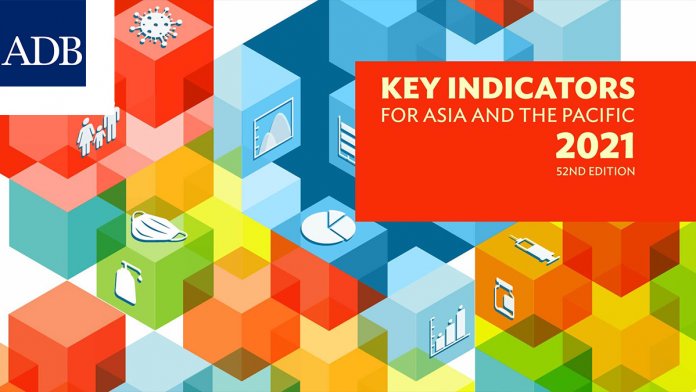Hola amigos, This year we saw the 52nd annual edition of Key Indicators for Asia and the Pacific was prepared by the Statistics and Data Innovation Unit (EROD-SDI) within the Economic Research and Regional Cooperation Department (ERCD) at the Asian Development Bank (ADB). The report demonstrated that the region made substantial progress in the last two decades with respect to several development targets.
Before talking more about the report let’s know a little bit about Asian Development Bank.
The Asian Development Bank is a regional development bank established in 1966. It has 68 members. India is a founding member. It presents comprehensive economic, financial, social and environmental statistics for ADB’s 49 regional members.
Their main aim is to promote social and economic development in Asia and the Pacific. Their main headquarters is in Manila, Philippines.
Let us now talk about the report:
Key Points
- Poverty:
- The covid-19 pandemic pushed 75-80 million people in the developing Asia-Pacific into extreme poverty in 2020.
- About 203 million people which is 5.2% of developing Asia’s population already lived in extreme poverty as of 2017.
- Without the pandemic, that number would have declined to an estimated 2.6% in 2020.
- Contribution to Global GDP:
- Asia and the Pacific’s economy has grown at a vigorous steps in recent years and contributed upto 35% to global Gross Domestic Product (GDP) in current US dollars in 2019.
- But Covid-19 pandemic took a toll just when weaker domestic investment and slowing global trade and economic activity started to challenge this momentum.
- Household Income:
- A notable number of households engaged in business were severely affected by the pandemic.
- An increase in income, no change or a decrease of less than 26% was reported by more than half Among households engaged in agriculture or relying on wages and salary
- Unemployment:
- As unemployment rates increased by at least 20% in 2020 due to the pandemic across the globe, the Asia-Pacific region lost an estimated 8% of working hours.
- As businesses were disrupted, many workers lost their jobs, leading to higher unemployment and underemployment rates.
- Labour Force Participation:
- The labour force participation rates among women from 2019 to 2020 , on average, declined by 1.4%, while labour force participation rates among men declined by 0.8%.
- 71% of Asia-Pacific’s workforce is now in non-agricultural employment. From 2000-2019, the region’s non-agricultural employment rate grew to 71% from 52%, one of the fastest growth rates worldwide.
- Sustainable Development:
- The pandemic is threatening Asia-Pacific’s progress toward critical targets under the United Nations-mandated Sustainable Development Goals (SDG).
- Children Related Data:
- The prevalence of undernourishment decreased from more than 521 million people in 2001 to 316 million in 2019.
- Almost all learners in the region were affected by closure of schools during the Covid-19 pandemic.
- Despite efforts to continue school activities through remote learning, poorer students suffered greater disruption to their education during the pandemic.
Way Forward
- Asia and the Pacific have made impressive strides, but Covid-19 has revealed social and economic fault lines that may weaken the region’s sustainable and inclusive development.
- To achieve the SDG of the United Nations’ 2030 Agenda for Sustainable Development, decision makers need to harness high-quality and timely data as a guide for actions to ensure that the recovery leaves no one behind – especially the poor and vulnerable.
Give us your insights about the report. Do let us know if you liked this blog and want more such blogs. Visit Hranker to read our latest blogs. Keep learning.




